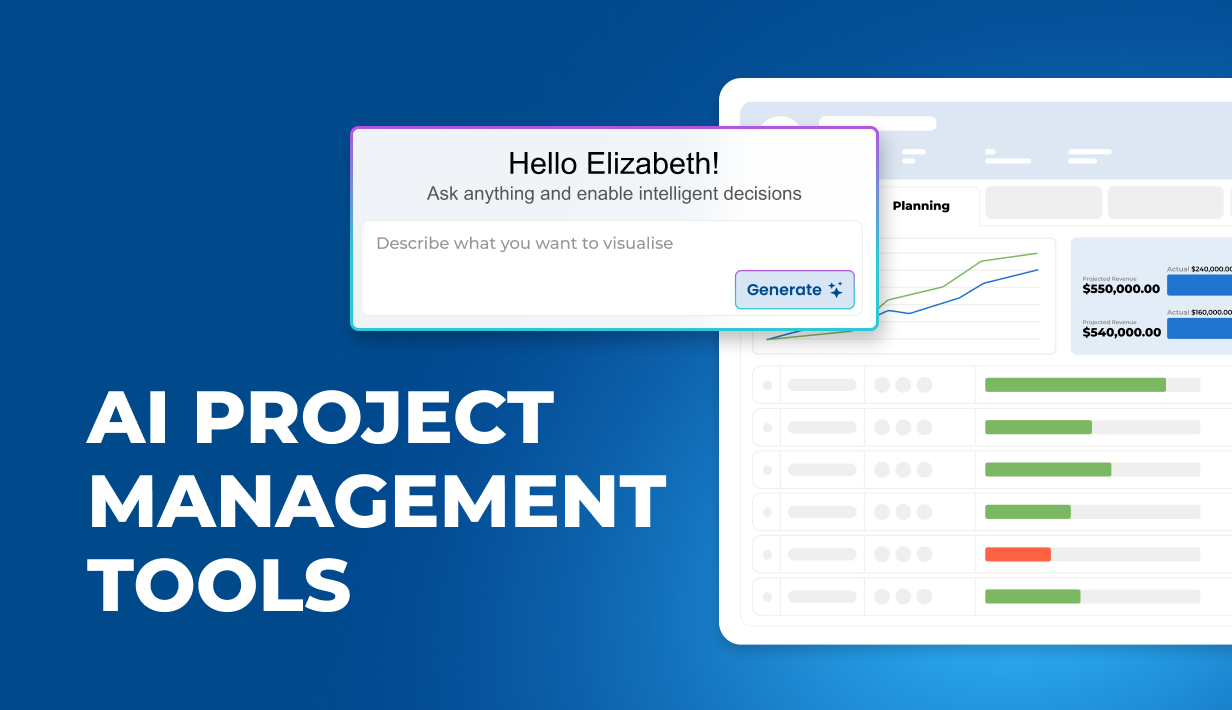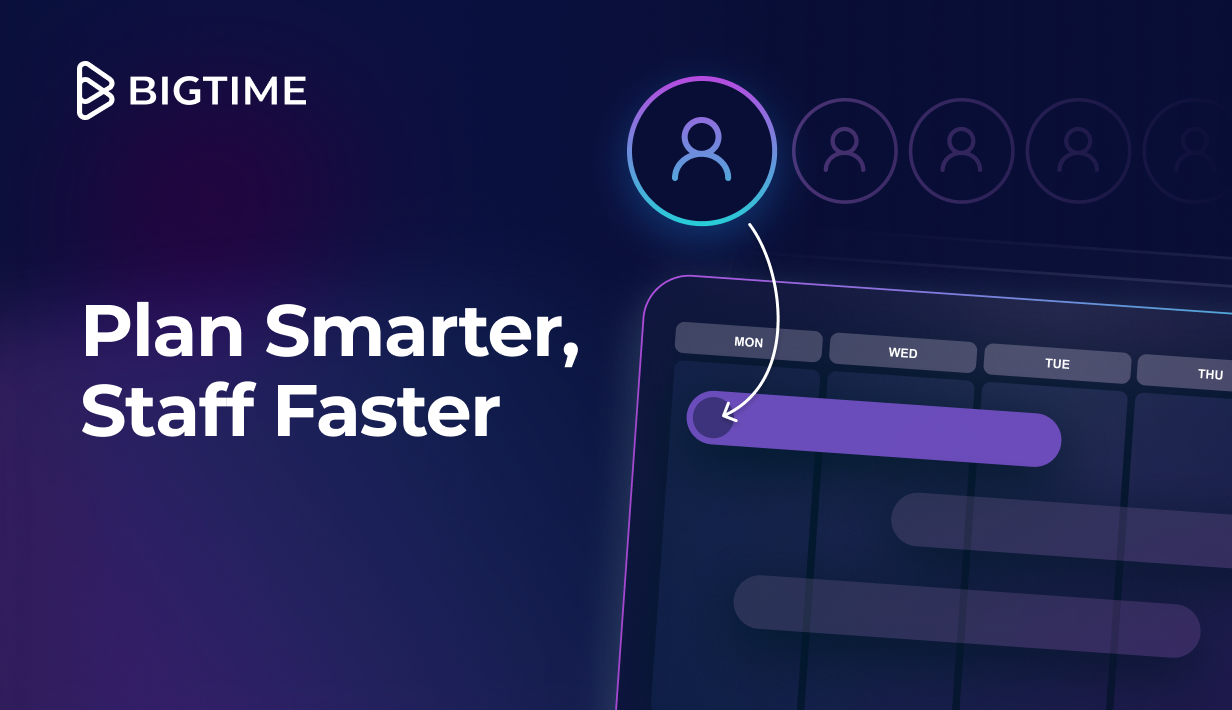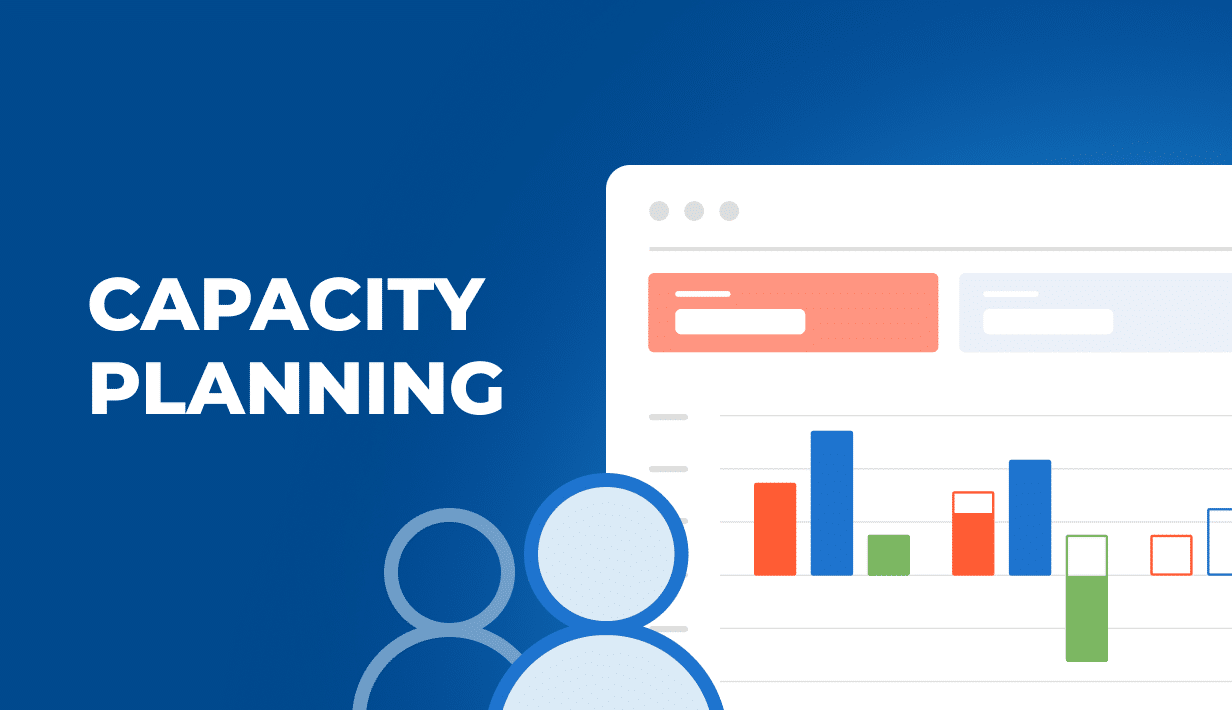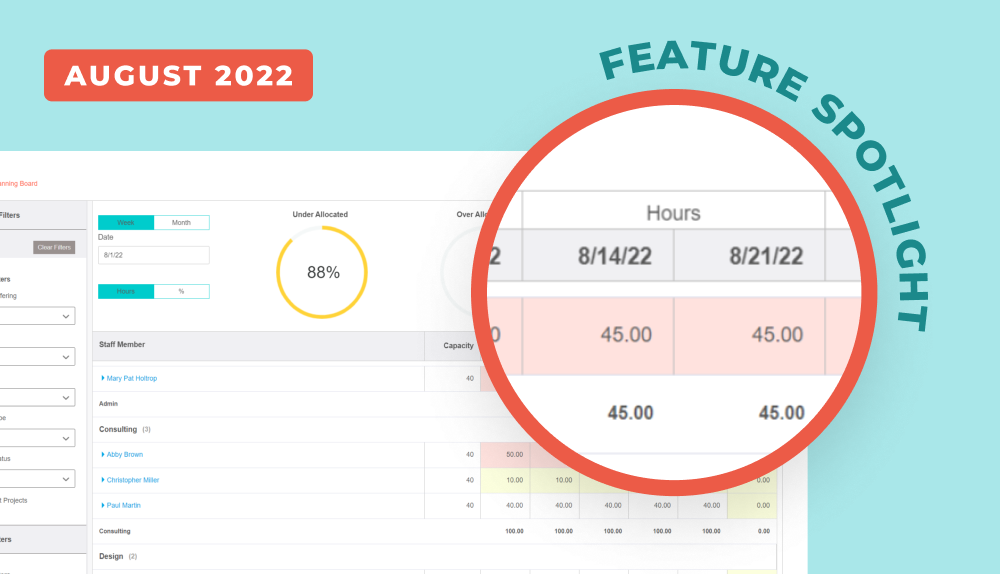Project managers who think that AI can only summarize meetings are in the wrong; now, AI project management tools can do much more than that.
There’s no denying that AI features are slowly taking professional services industry by a storm, bringing automated task management, improved resource allocation and fewer repetitive tasks. Still, while the amount of available solutions for managing projects seem to double every week, only a few tools represent the best AI features on the market. Let’s identify them.
In this guide, we will show you:
- How AI can transform project management tools and help project managers?
- What AI features should you look for in today’s project management software?
- What are the best AI project management tools in 2025?
How Artificial Intelligence Transforms Project Management?
Task scheduling, shuffling multiple projects, monitoring project progress… All of those processess are made easier by the implementation of artificial intelligence. Still, those benefits of AI tools are just a tip of the iceberg, as such state-of-the-art solutions can help you with:
- Automating routine tasks. AI tools can handle time-consuming administrative tasks such as scheduling meetings, updating project statuses, assigning resources, and generating reports, leaving project managers with more time for critical processes.
- Minimize project risks. Can’t keep an eye on all the tasks? AI tools can help you track process, identify overdue tasks and improve team collaboration with live conclusions from actual data. They also analyze historical and real-time data to forecast project outcomes, identify potential delays, and flag risks early.
- Improving resource allocation. AI can manage tasks as well as the best business leaders. Such systems evaluate team capacity, skill sets, and availability to optimize task assignments, ensuring that the right people are working on the right projects at the right time.
- Monitoring project budget. From overheads to hourly rates, project cost management has never been a piece of cake – until now. AI task manager can keep track of every cost and every income, providing project managers with accurate information on the use of project budget.
- Optimizing team collaboration. Want your team members to be on the same page? Machine learning can help them arrive to the same conclusions, share the same data and work on the same reports without any discrepancies in formulas or sources. It’s simple!
What Key Features Should The Best Project Management Software Have?
Of course, not all AI project management tools are created equal; some have features that others can only dream about. But which ones of them are the features you should actively look out for? Here’s the list!
AI Task Manager
Medium and large organizations often struggle to assign tasks to the right people – after all, there are hundrends of them. Fortunately, AI demand matching can change that by finding the best people for every project and adjusting timelines based on real-time data. AI-driven systems can also detect bottlenecks before they become major delays.
Resource Allocation
Struggling to optimize utilization rates? AI software can do it for you. The software should automatically match team members to tasks based on skills, availability, and workload, helping to prevent overbooking and underutilization and managing daily tasks and their due dates to perfection.
Advanced Reporting
In professional services, data-driven insights are essential for the scalability of the whole business. Generative AI can help you with that, too. Choose tools that offer customizable dashboards, real-time performance tracking, and predictive analytics to get a complete overview of all the data, forecast delays, and generate actionable suggestions for course correction.
Project Budgeting
Financial oversight is critical in any project evaluation process. Still, with numerous factors at play, it becomes increasingly difficult to monitor every invoice and every penny. AI changes that by analyzing spending patterns and and identifying any overruns in a matter of seconds. The result? Unscathed project profitability and error-free budgeting.
Team Collaboration
Seamless communication leads to smoother project execution. Features like real-time updates, report sharing, and automated data summaries powered by AI can boost transparency and team productivity, leading to improved morale and customer satisfaction rates.
The Best AI Tools for Project Management: Ranking
Finding the right AI-powered project management tool can significantly impact your team’s productivity, decision-making, and project outcomes. While several platforms offer automation and smart features, not all deliver the same level of intelligence, ease of use, or return on investment. Here’s how the top tools stack up:
BigTime
BigTime sets the gold standard for AI-powered project management, especially for firms that operate on a billable-hours model, like consultancies, architecture firms, engineering groups, and accountants. Its strength lies not only in the depth of its features but also in how seamlessly AI supports every stage of the project lifecycle, from budgeting and resource planning to time tracking and reporting.
What makes BigTime stand out is its laser focus on profitability and performance. It doesn’t just track projects; it actively helps teams make better decisions. The AI engine analyzes staffing needs, predicts overruns, and flags efficiency gaps. Combined with robust reporting and native billing tools, BigTime enables firms to operate with precision and confidence.
Despite its power, BigTime is remarkably user-friendly, with a clean interface and fast onboarding. It’s built for teams who want to eliminate guesswork, reduce overhead, and manage multiple clients or deliverables without drowning in spreadsheets.
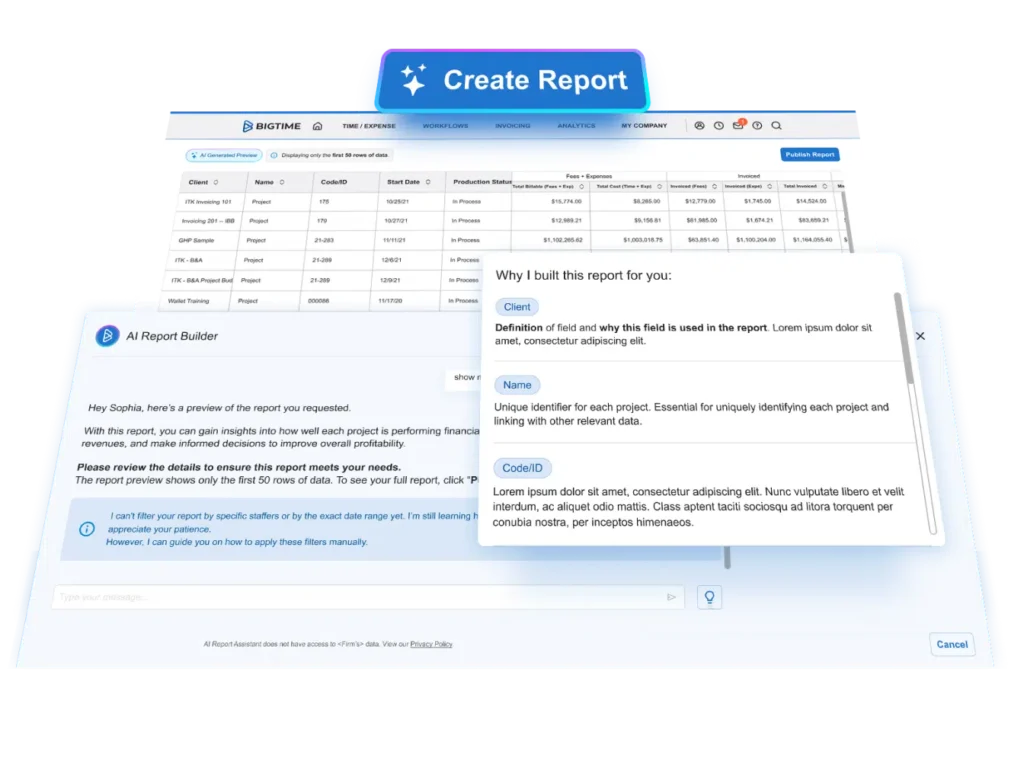
BigTime’s Key Features Include:
- AI-powered time and expense tracking with intelligent categorization
- Smart resource allocation using workload, availability, and skill matching
- Real-time budget tracking and forecasting
- Customizable dashboards and performance reports
- Integrated billing, invoicing, and expense recovery
- Deep integrations with financial, CRM, and workflow tools (QuickBooks, Salesforce, Zapier, and more)
- User-friendly interface with minimal training required

Asana
Asana is widely used by marketing teams, startups, and small businesses thanks to its elegant design and intuitive task-tracking system. Its strength lies in simplicity: offering Kanban boards, task lists, calendars, and collaboration features that make basic project coordination easy.
However, Asana’s AI capabilities are underwhelming. While it includes rule-based automation (e.g., “if task is marked complete, notify assignee”), it lacks true intelligence – there’s no predictive resource planning, no risk forecasting, and no performance analytics driven by machine learning. In fast-paced or data-intensive environments, Asana becomes more of a digital to-do list than a strategic platform.
Key Features:
- Task boards, timelines, and calendars
- Lightweight rule-based automation
- Simple project portfolio tracking
Forecast
Forecast promotes itself as a smart, AI-first platform designed to help teams plan more accurately and optimize resources automatically. The platform includes promising features like automatic effort estimation, predictive scheduling, and AI-based budget tracking. These tools have potential—especially for agencies, consultancies, and hybrid tech teams that need to plan and deliver at scale.
However, users frequently report a steep learning curve and a clunky interface. While the core AI functions are powerful, they’re not always intuitive or easy to access. Teams often need to invest time in configuration and training to get reliable results, which can slow adoption and frustrate stakeholders looking for immediate value.
Key Features:
- Predictive scheduling and smart task effort estimation
- AI-assisted resource planning and allocation
- Integrated time tracking and budget monitoring
Wrike
Wrike is a heavyweight project management platform designed for enterprise teams and large-scale operations. It offers powerful features like custom workflows, task hierarchies, workload balancing, and team dashboards. However, its complexity often gets in the way of usability, especially for teams that don’t have dedicated project management roles.
Wrike does include some AI features, such as risk detection and effort prediction, but they’re relatively limited and often require manual configuration to be useful. The platform is better suited for operational control than agile insight. Many users find that they spend more time managing Wrike than managing their projects.
Key Features:
- Custom workflows and task dependencies
- Basic risk prediction and workload alerts
Try BigTime Now and Implement AI Tools in Days
Do you want to use AI tools to improve task prioritization, time management, progress tracking, and more? Now you can – and you don’t need to wait for months to do that. Even in organizations with more than 1 500 employees – such as Billennium – BigTime can implement all its features in under 3 months, giving you a complete overview of all the key data supplemented by AI insights.
Sounds good? Book a demo with BigTime now and see how AI can transform your data management.

